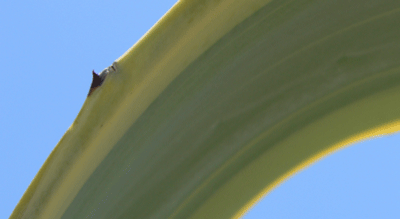In early June of 2001, I was sitting at my desk at the NASA Ames Research Center trying to debug a computer simulation. Outside my window, the traffic was gridlocked on Highway 101. The distant folds of the Diablo Range shimmered in the California Sun. The phone rang, jarring me out of my abstracted state of mind.

“Dr. Laughlin? Its Robin McKie of the London Observer.”
His voice seemed friendly and reasonable, and I’ll admit that I was pleased to have warranted a call from an overseas reporter. To the best of my recollection, our conversation started something like this:
“Well the reason I’m calling is because I recently saw an abstract of your work concerning this so-called idea of `Astronomical Engineering’, and I was wondering if you could take a few minutes to fill me in on what its all about?’’
I was happy to oblige. For an astronomer not so far removed from the solitude and anonymity of a doctoral thesis involving gravitational instabilities in protostellar disks, it is undeniably exciting to talk about one’s work with a reporter. He listened attentively as I talked up the extremely distant future.
I described how as the Sun fuses the hydrogen in its core into helium, it slowly grows larger, and more luminous. Detailed computer calculations of the Sun’s future evolution show that in a billion years, the Sun will be roughly ten percent brighter than it is today. Cloud-free global climate models indicate that a ten percent increase in the Sun’s luminosity will drive a “moist greenhouse’’ effect on the Earth, which will have a catastrophic effect on life forms which cannot thrive in a steam-scalded environment. Furthermore, in 3.5 billion years, the total luminosity of the Sun will be forty percent larger than at present. Undcr such conditions, the climate models predict that Earth will undergo a catastrophic “runaway greenhouse” effect, which will turn the Earth into a twin of Venus, and spell a definitive end to carbon-based life on our planet.
At Earth’s present orbital location, the ecosystem will likely be destroyed within a billion years by the gradually brightening Sun (quite apart from what we humans might do in the vastly nearer-term future). The Sun, however, is at present less than halfway through its lifespan. In six billion years, the luminosity of the Sun will only be slightly more than twice as large as now. At that time, a planet located in an orbit between Earth and Mars would receive the same amount of solar energy as is now intercepted by the Earth.
The discovery of scores of battered, heavily modified extrasolar planetary systems, has shown that planetary orbits are by no means inviolate. Over time, orbits can change. When I was in college and then graduate school, I was always vaguely bothered by the fact that life on Earth will be extinguished long before the Sun is at the end of its useful hydrogen-burning main sequence phase. Could there possibly be a way to compel Earth’s orbit to slowly expand to larger cooler distances from the Sun? Is it conceivable that artificially directed processes might eventually alter the course of the solar system? Already, the orbiting planets are employed to speed space probes to distant reaches of the solar system. Might it be feasible to direct the trajectories of larger objects as well?”
“Hmm,” said McKie, “and I take it from your work that this is indeed a distinct possibility?”
(to be continued)
